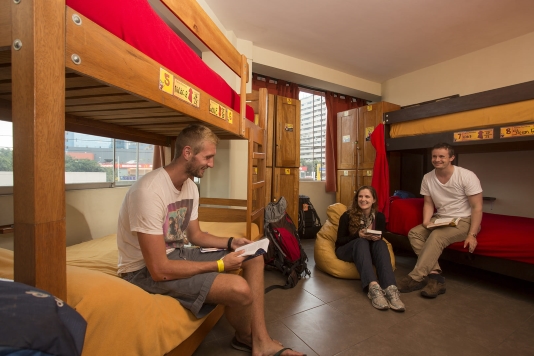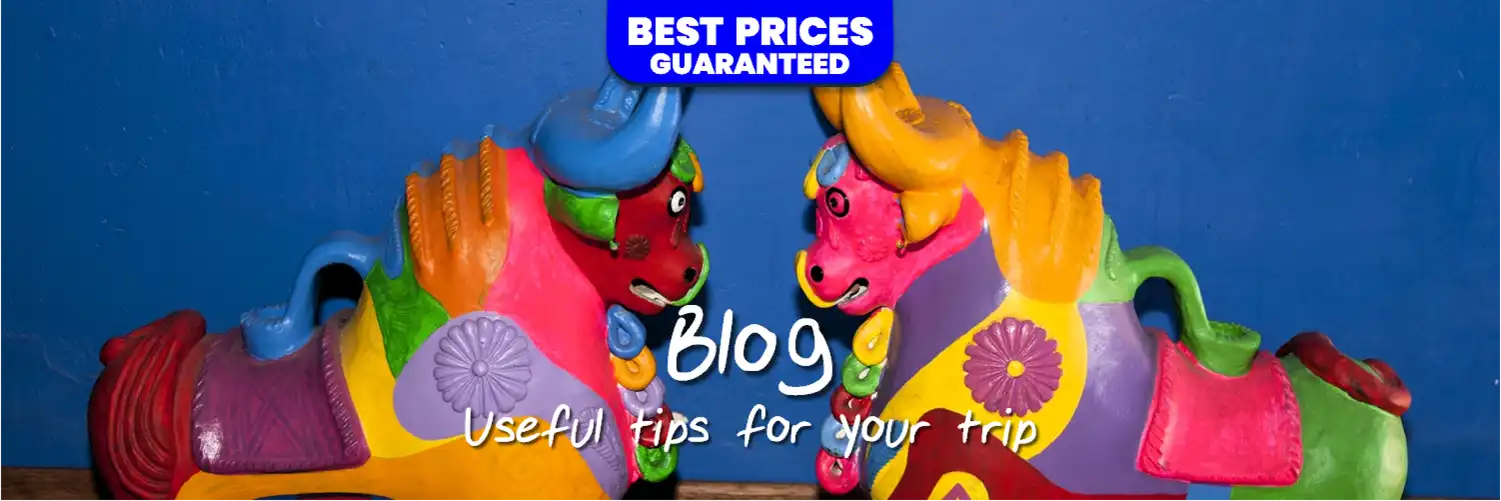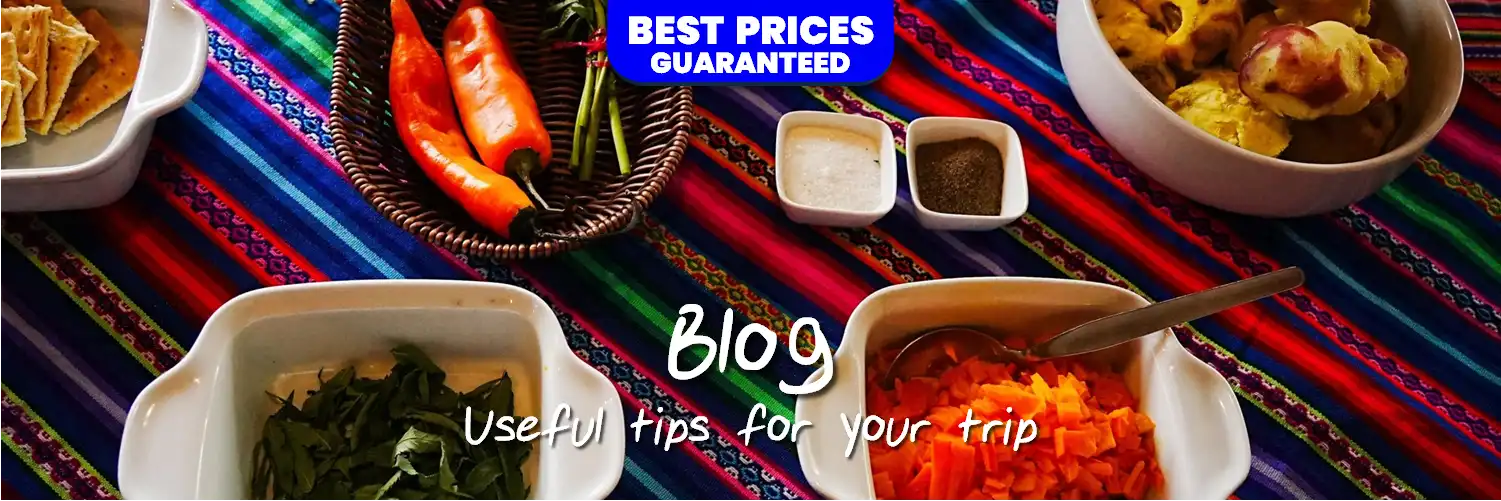How to Make Friends While Traveling: Golden Rules of Social Hostels

You travel to see the world… and to connect with it. A social hostel is where that magic happens: different accents, plans born at a shared table, friendships that start with “mind joining?”. The difference between an average night and an epic one is rarely the destination; it’s usually the people. And connection isn’t luck—you can design it. Here’s your no-nonsense playbook to make friends on the road without trying too hard, with respect, and backpacker style.
TL;DR: Join hostel activities, introduce yourself and respect the space, be kind to everyone, and do walking tours. Nail those four, and you’re already winning.
If Peru is on your radar, take a peek at the Pariwana experience on the homepage. You’ll get the vibe, the locations, and the social tone (spoiler: very solo-traveler-friendly).
1) The right mindset (before you open the dorm door)
A social hostel isn’t a dating app or an office; it’s an ecosystem. Energy circulates when you contribute.
Curiosity > performance. You don’t need to be the life of the party; you need genuine interest. Go with openers like “Where are you from?”, “What surprised you about this place?”, “Plans for tomorrow?”
Micro-openings. Small gestures build trust: a smile, pulling up a chair, sharing hot sauce, topping up someone’s bottle.
Respect as the base layer. Volume, smells, order, timing. Nothing shuts down social energy faster than a roommate who invades.
The golden rule: being easy to live with beats any clever speech.
2) First 24 hours: from check-in to “shall we?”
Your most fertile social window is day one. Keep it simple:
2.1 Quick intro (dorm & lockers)
Introduce yourself to your roommates as soon as you find your bed. Short and human:
“I’m Alex from Toronto. Here for two days, want to do a walking tour and try local food. Any tips?”
Then signal respect for the shared space: tell them where you’ll keep your pack, ask about lights, use earbuds. This frames you as an ally, not an intruder.
Good roommate checklist:
Label food and keep your zone tidy.
Don’t block pathways with luggage.
If arriving late, prep essentials (PJs, toothbrush, charger) before entering.
Use low light or your phone’s dim torch at night.
2.2 First pass through common areas
Drop your bag, then swing by kitchen and lounge—two places where “Where are you from?” just happens.
Kitchen: offer a bite (“Got leftover pasta—anyone want?”).
Lounge: ask about the activity board (classes, pub quiz, karaoke). If there’s a schedule, sign up for at least two items—one tonight, one tomorrow morning.
Integration isn’t luck; it’s showing up (with boundaries and respect).
3) Join hostel activities (your social shortcut)
Non-negotiable: participate in activities as actively as you can. Trivia nights, cooking classes, beer pong, pub crawls, workshops—the ice is half-broken by design.
Tactical tip: show up five minutes early and introduce someone to someone else (“Emma, Tom’s from your city and also surfs”). Be the connector; people gravitate to connectors.
Anti-cringe rule: participate, don’t monopolize. If you stand out, let it be for helping others get in.
Heading to Lima? Browse the live activity lineup and pick something you actually enjoy—social momentum follows a ready-made plan. Check the house agenda here: Lima activities. In Cusco, group dynamics are in the air—peek at the Cusco activities and join something tonight.
4) Walking tours: the cleanest way to meet people (and the city)
A walking tour (free or low-cost) gives you three wins:
the ice breaks with strangers,
you understand the city,
the post-tour “shall we grab food?” is almost automatic.
How to make it work:
Arrive a bit early and chat with 2–3 people. Two questions do the job: “Where are you from?” and “What brought you here?”
Walk next to different people during the tour instead of sticking to just one.
At the end, suggest a micro-plan: coffee, a local market, sunset viewpoint. In Lima, that might be ceviche or a chicha morada; in Cusco, a juice in San Blas.
Bring cash for the tip if it’s donation-based; it’s part of the code.
If you plan your own routes, download offline maps—they save explanations and spark plans. Grab these free maps and mark a quick route on the lounge table to gather a mini-crew in 30 seconds.
5) Dorm & common-area etiquette (the bedrock of social life)
“Introduce yourself and respect the space” isn’t a cute extra; it’s the foundation of a pleasant stay (which makes socializing possible).
Noise: prep your pack the evening before if you’re up early; use dim light at night.
Smells: ventilate but don’t turn the room into a perfume ad.
Shared bathrooms: leave things cleaner than you found them.
Kitchen: label, clean, and never touch other people’s food (yes, it shows).
Cultural respect: your dorm is a mini-UN; handle sensitive jokes and topics with care.
Your social reputation starts with being a good roommate.
6) Conversations that flow (and avoiding weird silence)
You don’t need to be a comedian; you need curiosity and listening. Openers that work anywhere:
“Best meal of your trip so far?”
“What did this city teach you that you didn’t expect?”
“What plan did you change once you arrived?”
“If you could repeat one thing tomorrow, what would it be?”
“Worst night bus?” (stories guaranteed)
“A underrated place you’d recommend?”
“Three things you’d pack if you restarted your trip?”
“Up for X after the walking tour?” (name it: market, museum, viewpoint)
Skip job-interview vibes in the first minute and ditch “me, me, me” speeches. Aim for 50/50: ask and share.
7) Daily micro-rituals (5 minutes, big impact)
Coffee circle: 10:00–10:15 in the kitchen. Whoever shows up, joins.
Map in hand: open one and ask, “Anyone been to X?” People approach themselves.
Mini planning board: three sticky notes—“Walking tour 11:00”, “Market 13:30”, “Sunset 17:45”—with your name.
End-of-day swap: “3 things that worked for me today.” Short. Useful.
8) Where conversation flows (with Lima & Cusco examples)
Lima (Miraflores + Barranco): oceanfront parks, skaters, paragliders, sunsets—the social stuff writes itself. Still choosing your base? See the Lima hostel (social-friendly location). For neighborhood-level ideas, skim the Lima travel guide: markets, viewpoints, and easy walks.
Cusco (Historic Center + San Blas): the city is an open-air history class; San Blas is all tiny corners and artisan energy. For an easy HQ, check the Cusco hostel and plan days with the Cusco travel guide.
Peru overall: if you’re doing a country route, the Backpacker’s guide to Peru helps you set priorities (coast, highlands, jungle) and makes map-table chats more productive.
9) Be kind to everyone (without becoming the hostel MC)
Kindness ≠ forced hype. Low-effort signals, high trust:
Names: repeat them; jot them down if needed.
Share: a clip, repellant, tape, a tip.
Read the room: some folks don’t feel chatty today; no problem.
Include: “Want to join?” is a master key.
Kindness is cheap; the social return is ridiculous.
10) Three-layer social plan (for extroverts, ambiverts, introverts)
Turbo mode (extro): 2 hostel activities + 1 post-tour plan + 30 min in the kitchen.
Balanced mode (mix): 1 activity + walking tour + short coffee in the afternoon.
Energy-save mode (intro): 1 small-group walking tour + 15 min in the lounge with a book (yes, you can socialize with a book; look up now and then and comment).
11) Social logistics: WhatsApp groups, boards, and “crew of the day”
Many hostels run WhatsApp/Telegram groups by day or activity. Grab the QR at reception. Pitch a “crew of the day”: three people, one concrete plan (market, museum, viewpoint). Small, manageable, repeatable.
Pro tip: end the evening with a hook: “I’m doing X at 10 tomorrow—message me if you’re in.” Whoever wants to join, will; you’re not dragging anyone.
12) Eat, walk, learn: the three contexts that bond the fastest
Eat: markets, food stalls, cooking classes. In Peru, food is identity, not just calories. The official site explains how cultural mixing made the table so special—handy context for deeper chats (Peru.travel – Gastronomía peruana). “Ceviche and route-swap?” is a killer opener.
Walk: neighborhoods, historic centers, waterfronts. Walking evens out silences and makes questions flow naturally.
Learn: local history, street art, ingredients. If you want a panoramic, visual intro that fuels conversations, browse National Geographic – Travel: Peru.
13) Mistakes that clip your wings (avoid these)
Drinking like it’s a competition. No one wants to babysit.
Being the critic of everything. Constant comparisons to your hometown are exhausting.
Chasing likes before connection. Stories first, friends after… usually ends with neither.
Gossip. Fun for five minutes; costly for a week.
Hogging plugs and tables. Monopolizing shared resources tanks your social score.
Rejecting small plans. Some of the best bonds start with a 20-minute plan (ice cream, quick viewpoint).
14) Safety and boundaries: social yes, pressure no
Being social doesn’t mean saying yes to everything. Keep clear boundaries:
If you don’t want to party: “I’m resting tonight—breakfast tomorrow?”
If something makes you uncomfortable, create distance without explaining yourself.
If someone is invasive, find staff; a good hostel protects the vibe.
15) 24–48-hour playbook (copy-paste template)
Day 1 – Arrival
Check-in and quick intro in the dorm.
Lap around common areas + check the activity board.
Sign up for one activity tonight.
Ask about the walking tour tomorrow.
Simple dinner in the shared kitchen; offer a small share.
Day 2 – Integration
Walking tour in the morning.
Lunch with 2–3 people from the tour.
Afternoon micro-plan (market or viewpoint).
Hostel activity at night (quiz, karaoke, class).
Close the day by floating a plan for tomorrow: “9:30 coffee and map.”
Day 3 – Consolidation
Repeat 1 activity + 1 light plan.
Switch circles: talk to someone new.
If a route crew forms, swap contacts.
16) Working on the road (digital nomads): social without losing focus
90/15 blocks (90 min deep work, 15 min light social).
Casual coworking: share an outlet and, on breaks, invite a “10-min stretch.”
Goal: 1 activity/day—keeps you connected without burning out.
Ask staff for quiet zones; a social hostel can also protect your productivity.
17) Lima & Cusco: concrete ice-breakers
Lima (Miraflores + Barranco)
Morning: walking tour of the Historic Center to build context and easy conversation.
Afternoon: Malecón (paragliders, skaters, parks). Low-effort chats happen.
Night: hostel activity (karaoke/quiz) and a “ceviche run?” closer. For neighborhood planning, see the Lima guide; if you’ve chosen your base, the Lima hostel is sociability-wise a strong location.
Cusco (Center + San Blas)
Morning: walking tour around Plaza de Armas and Inca streets; shared stories spark organic talk.
Afternoon: short workshop (weaving, Peruvian cooking) or San Blas market.
Night: coca tea in the lounge; altitude gives you honest conversations. Plan with the Cusco guide and, if you need a base, check the Cusco hostel.
If Machu Picchu is on your list, half the hostel will want to chat about it. Read this Machu Picchu guide beforehand (tickets, times, weather, small hacks). For big-picture context to pitch route ideas, a collaborative overview like Wikivoyage – Peru helps.
18) Data & context to feed conversation
Sometimes a well-placed fact seeds a great conversation. For instance, understanding the importance of tourism in Peru’s economy helps shape respectful behavior. The WTTC maintains country factsheets with trends and employment—useful context, no guesswork (WTTC – Peru: Travel & Tourism Economic Impact). For visual narratives to spark curiosity, browse National Geographic – Travel: Peru.
19) Honest social FAQ
“I’m solo and introverted. Am I doomed?”
No. Use energy-save mode (1 activity + 1 micro-plan) and pick small-group walking tours. Hostel folks respect rhythms; coherence attracts.
“Do I have to drink to fit in?”
No. Social hostels value good vibes, not alcohol levels. Offer daytime plans: markets, museums, viewpoints.
“What about snoring roommates?”
Earplugs + eye mask + humor. If it’s extreme, talk to reception—sometimes moving one bed makes a difference.
“What if I connect with no one today?”
It happens. Shower, eat well, sleep. Tomorrow: early walking tour + one activity at night. Consistency pays off.
20) Wrap-up: friendships are built from small moves
Do the basics really well:
Join activities,
Introduce yourself without invading,
Be kind to everyone,
Join walking tours.
With that, your hostel stops being “just a bed” and becomes a basecamp for stories you’ll remember for years. If you’re shaping a Peru route and want to dodge common doubts, the country guide sets priorities; to rally people in seconds, print or share these free maps and trace a route. When people see a line, the plan forms itself.
✍️ Pariwana Editorial Team
Practical travel tips written by backpackers, for backpackers.

Simple tips to thrive in shared dorms and make the most of your hostel experience.


